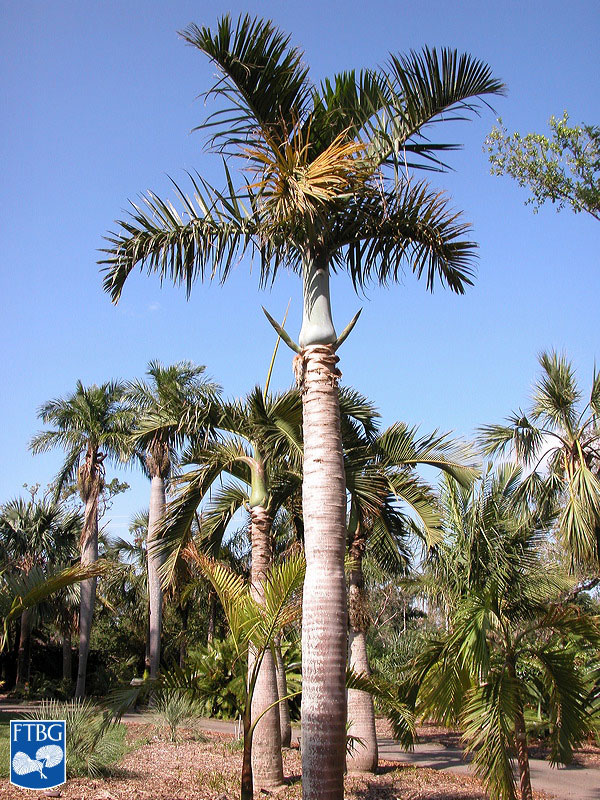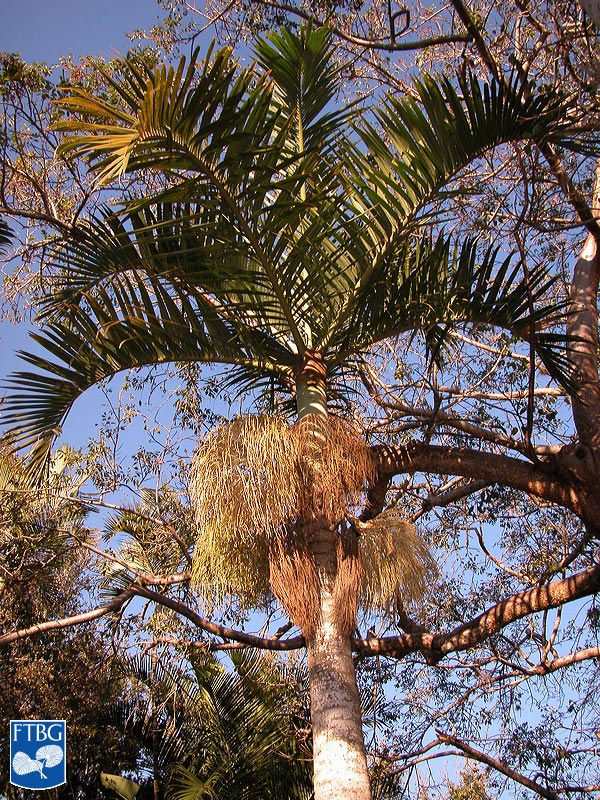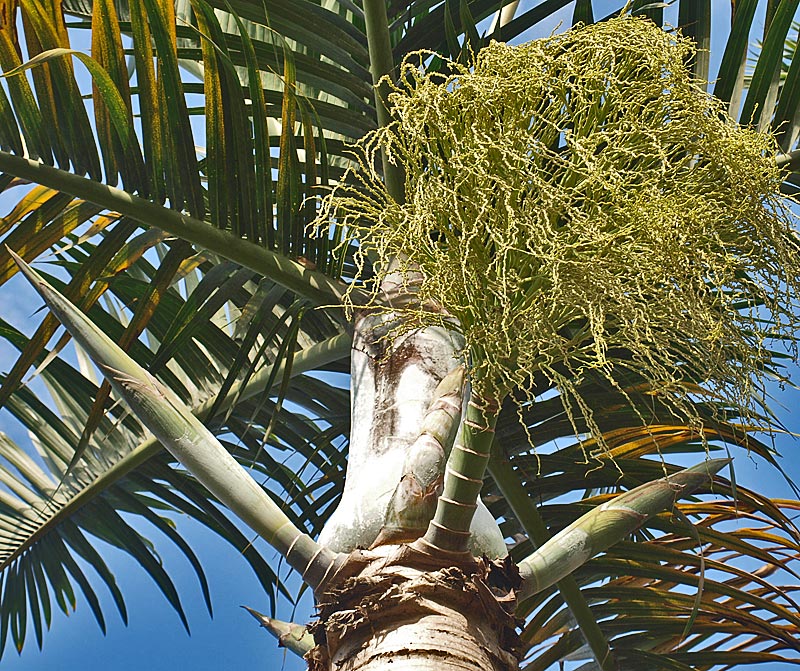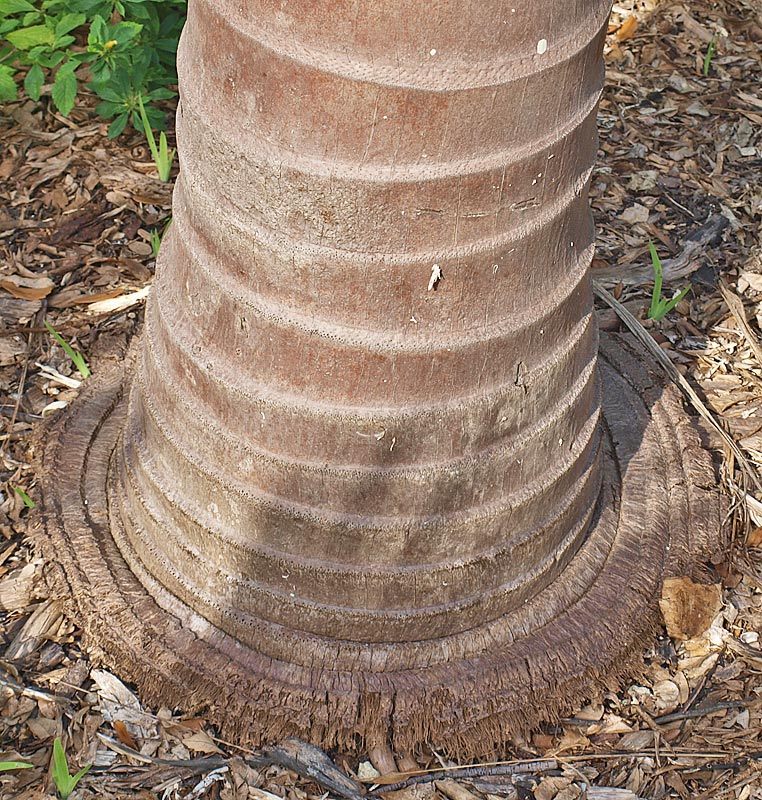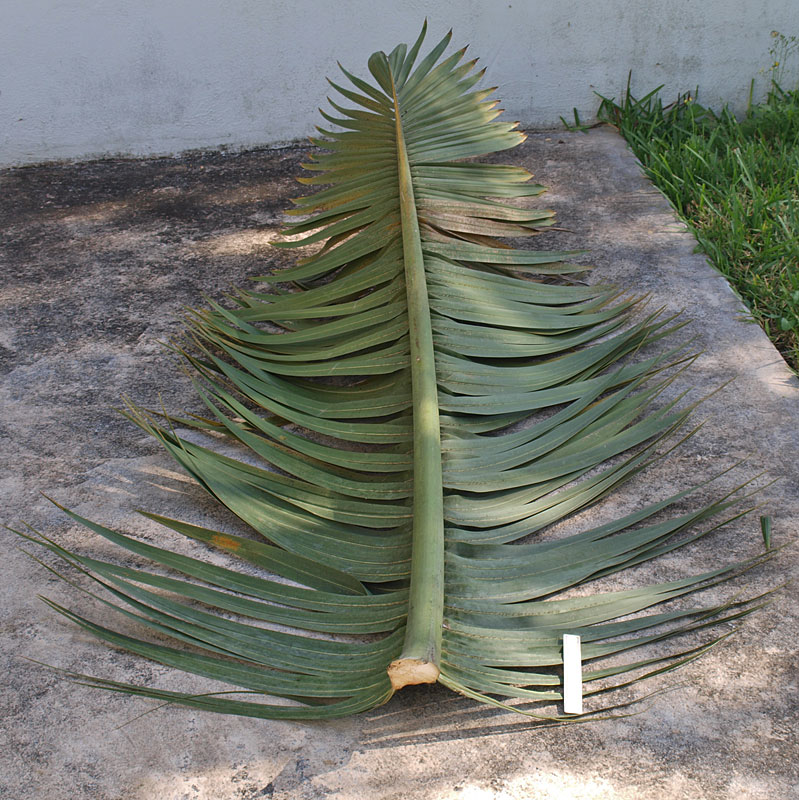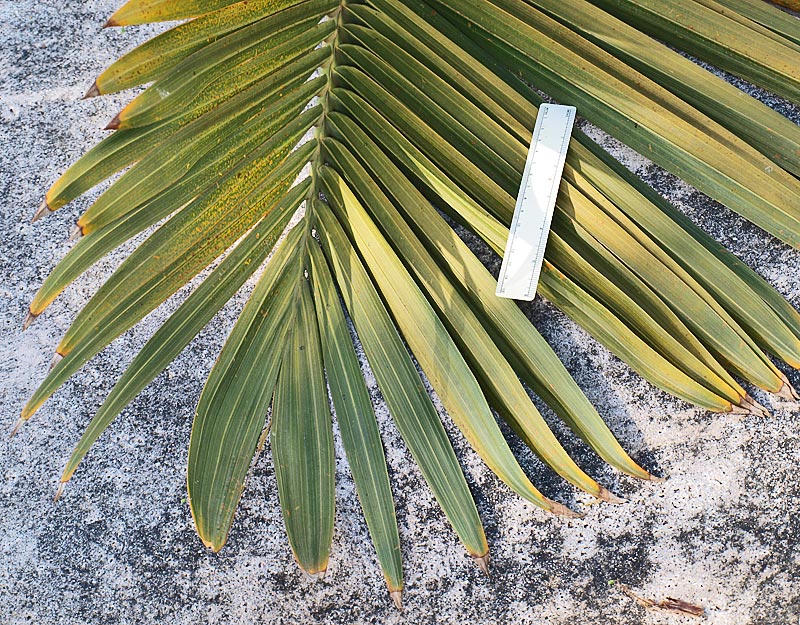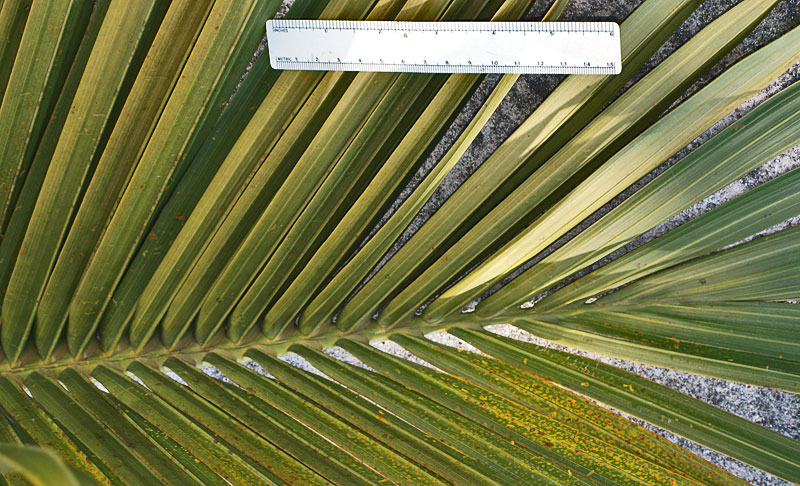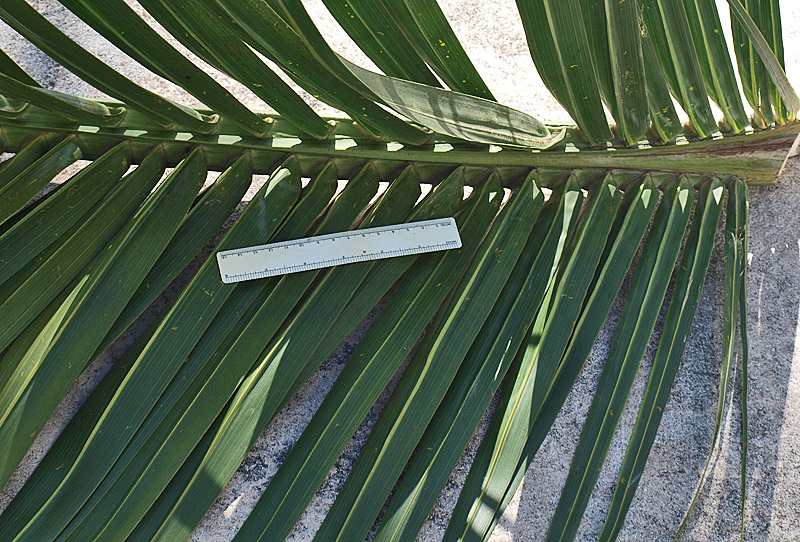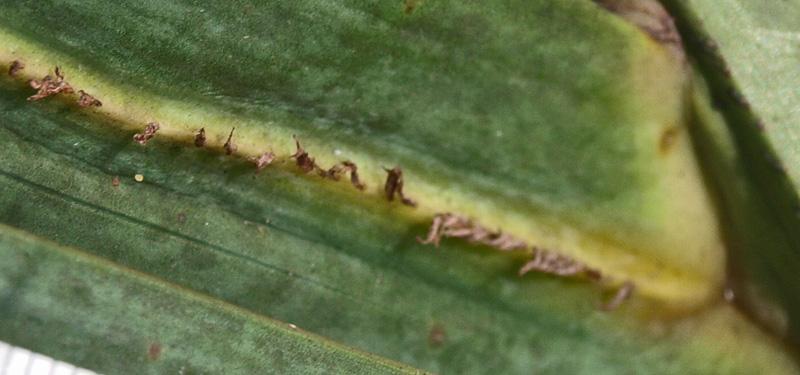Hyophorbe verschaffeltii
|
Hyophorbe verschaffeltii habit. Photograph courtesy of Fairchild Tropical Botanical Garden, Guide to Palms http://palmguide.org/index.php |
|
Hyophorbe verschaffeltii canopy. Photograph courtesy of Fairchild Tropical Botanical Garden, Guide to Palms http://palmguide.org/index.php |
|
Hyophorbe verschaffeltii inflorescence and horn-shaped inflorescence buds |
|
Hyophorbe verschaffeltii base of stem |
|
Hyophorbe verschaffeltii leaf |
|
Hyophorbe verschaffeltii leaf tip |
|
Hyophorbe verschaffeltii upper surface of leaflets and rachis |
|
Hyophorbe verschaffeltii basal leaflets |
|
Hyophorbe verschaffeltii ramenta along midrib |
|
Hyophorbe verschaffeltii closer view of hairs along midrib (mm scale) |
Common name
spindle palm
Description
Stems: Solitary, erect stems, to 12 m tall, up to 45 cm in diameter, ringed with close leafleaf:
in palms -- the leaf blade (which is usually divided into leaflets or leaf segments), the petiole (or leaf stalk) and the sheath (which forms the attachment of the leaf to the stem)
scars and somewhat swollen at the middle or toward the crown shaftcrown shaft:
a cylinder of clasping leaf sheaths toward the apex of the stem, found in some pinnate-leaved palms (e.g., <em>Wodyetia bifurcata</em>)
. Leaves: Pinnatepinnate:
like a feather; palms with pinnate leaves usually have compound leaflets attached to a rachis, although a pinnate leaf may be entire with pinnate veins (e.g., <em>Chamaedorea metallica</em>)
, reduplicatereduplicate:
Most palm leaflets or leaf segments are obviously folded. If the folds create an upside-down V-shape, with the margins lower than the midrib (so that rain might "run off the roof"), the folding is reduplicate.
, stongly arched, to 2 m long, with leaflets evenly spaced along the rachisrachis:
an extension of the petiole through the blade of a pinnate leaf to which leaflets are attached
and held in several planes for a plumoseplumose:
softly feathered
appearance. Upper leafleaf:
in palms -- the leaf blade (which is usually divided into leaflets or leaf segments), the petiole (or leaf stalk) and the sheath (which forms the attachment of the leaf to the stem)
surface is green and lower is gray-green; the midrib is prominent but there are no secondary ribs. Flowers and fruits: Inflorescences are erect in bud, to 1 m long, with several horn-shaped buds circling the base of the waxy green crown shaftcrown shaft:
a cylinder of clasping leaf sheaths toward the apex of the stem, found in some pinnate-leaved palms (e.g., <em>Wodyetia bifurcata</em>)
, densely branched with male and female flowers on the same inflorescenceinflorescence:
the reproductive structure of a flowering plant, including palms, consisting of flowers and associated bracts
. The ovoid fruits (2 cm long) are black when ripe.
Diagnostic features
Field: Solitary, erect stems, ringed with close leafleaf:
in palms -- the leaf blade (which is usually divided into leaflets or leaf segments), the petiole (or leaf stalk) and the sheath (which forms the attachment of the leaf to the stem)
scars and slightly swollen at the mid point or above; 5-10 leaves with pinnatepinnate:
like a feather; palms with pinnate leaves usually have compound leaflets attached to a rachis, although a pinnate leaf may be entire with pinnate veins (e.g., <em>Chamaedorea metallica</em>)
leaflets held in several planes
Lab: Ramentaramenta:
irregularly shaped, thin scales, sometimes found along the abaxial midrib of a leaflet
on the abaxialabaxial:
away from or the side of an organ facing away from the axis (<strong>ab </strong>as in <strong>ab</strong>andon); for example, the lower surface of a leaf blade or petiole
surface is found along the midrib.
Distribution
Native to Mascarene Islands
Additional comments
Cultivated in Hawaii
Scientific name
Hyophorbe verschaffeltii H.Wendl.
Family
Arecaceae/Palmae
Synonyms
Mascarena verschaffieltii ( H.Wendl. ) L.H.Bailey


